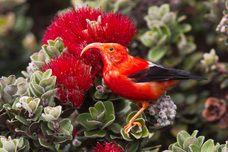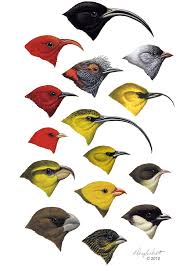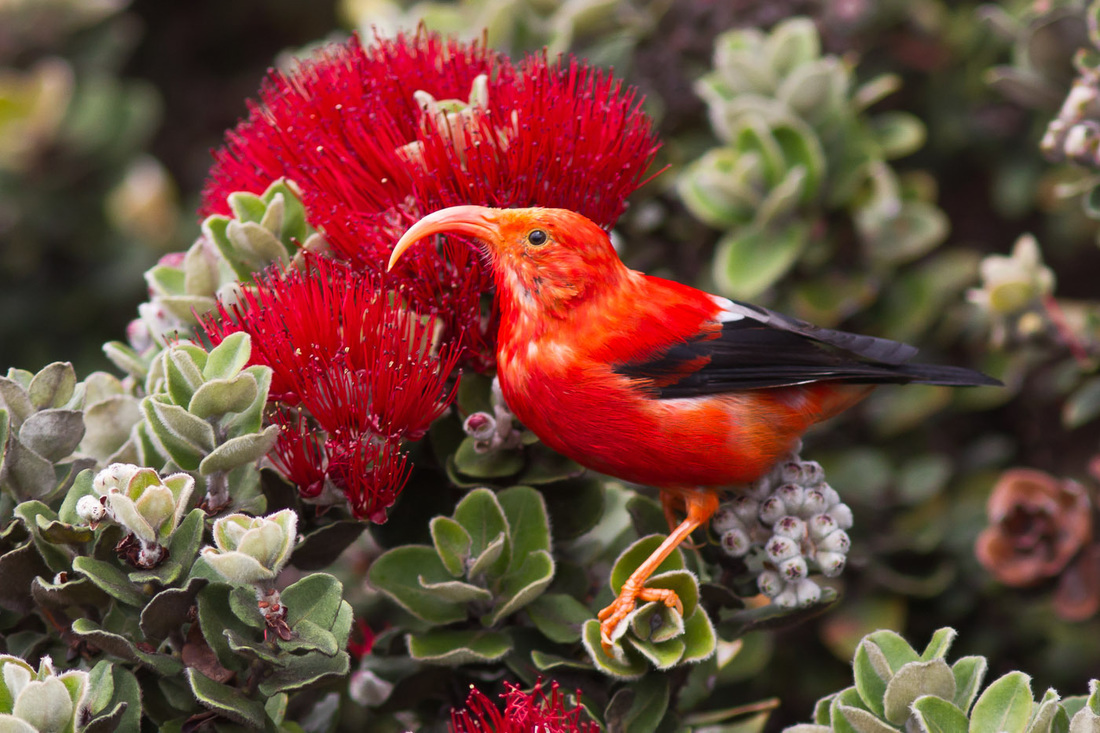
The 'I'iwi is one of the many species of honeycreepers that are believed to have evolved from a single ancestral species which colonized the islands millions of years ago. It's bright red feathers were highly prized by the Hawaiians who used them to make feathered capes, helmets, and other ornaments for the chiefs (Ali'i in the Hawaiian language). The traditional colors of royalty in Polynesia are red and yellow. The birds were caught by professional bird catchers who smeared tree sap onto a branch next to a flower blossom. When the bird landed on the branch to sip the flower nectar, it was caught. Care was often taken in removing the feathers from the bird, and ointment applied to help the bird heal. Rare birds were seen as a sacred resource.
"Before the arrival of the first Hawaiians, few plants and animals found their way to these isolated islands. But the few that made it here gave birth to a bewildering variety of species. Hawaii experienced a bonanza of evolutionary creativity that makes the Galapagos look tame. A single ancestral species of finch gave rise to dozens of species of Hawaiian honeycreepers — an assemblage of birds so diverse that a casual observer would never guess they are closely related." |
In most Hawaiian honeycreepers the tongue is troughlike and brush-tipped. The birds’ size ranges from 10 to 20 cm (4 to 8 inches).
Their movements are also unique as they spend much of their time hanging upside down poking their long, curved bills into flowers. The lehua blossom is one of their favorite foods. Like many native species, the 'i'iwi are becoming scarce. Habitat destruction and the introduction of foreign birds and mammals have led to the extinction of at least 8 of the original 23 species; most of the survivors are endangered. Today, 'I'iwi are found on the island of Hawai'i, Maui, Moloka'i, O'ahu and Kaua'i.








 RSS Feed
RSS Feed